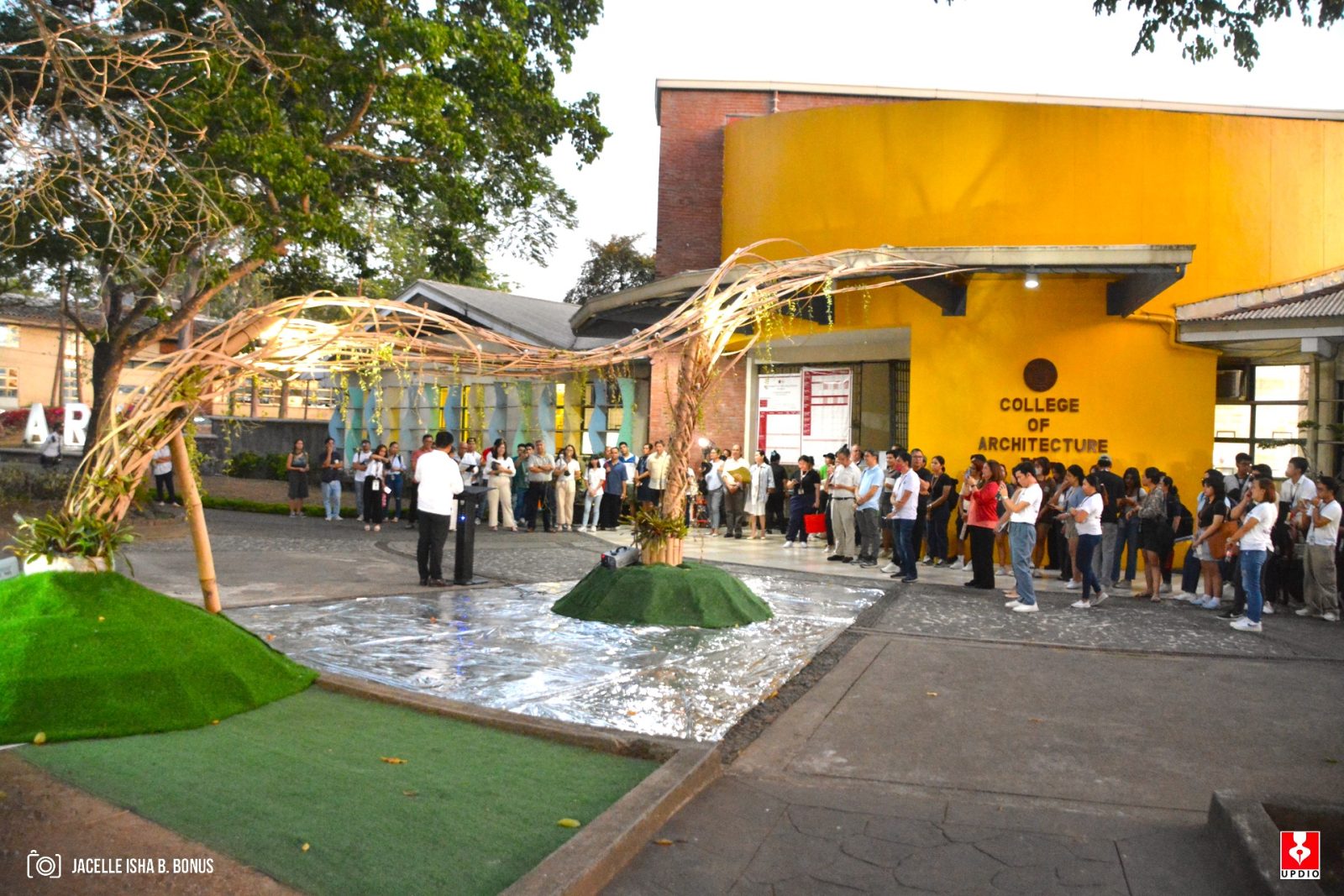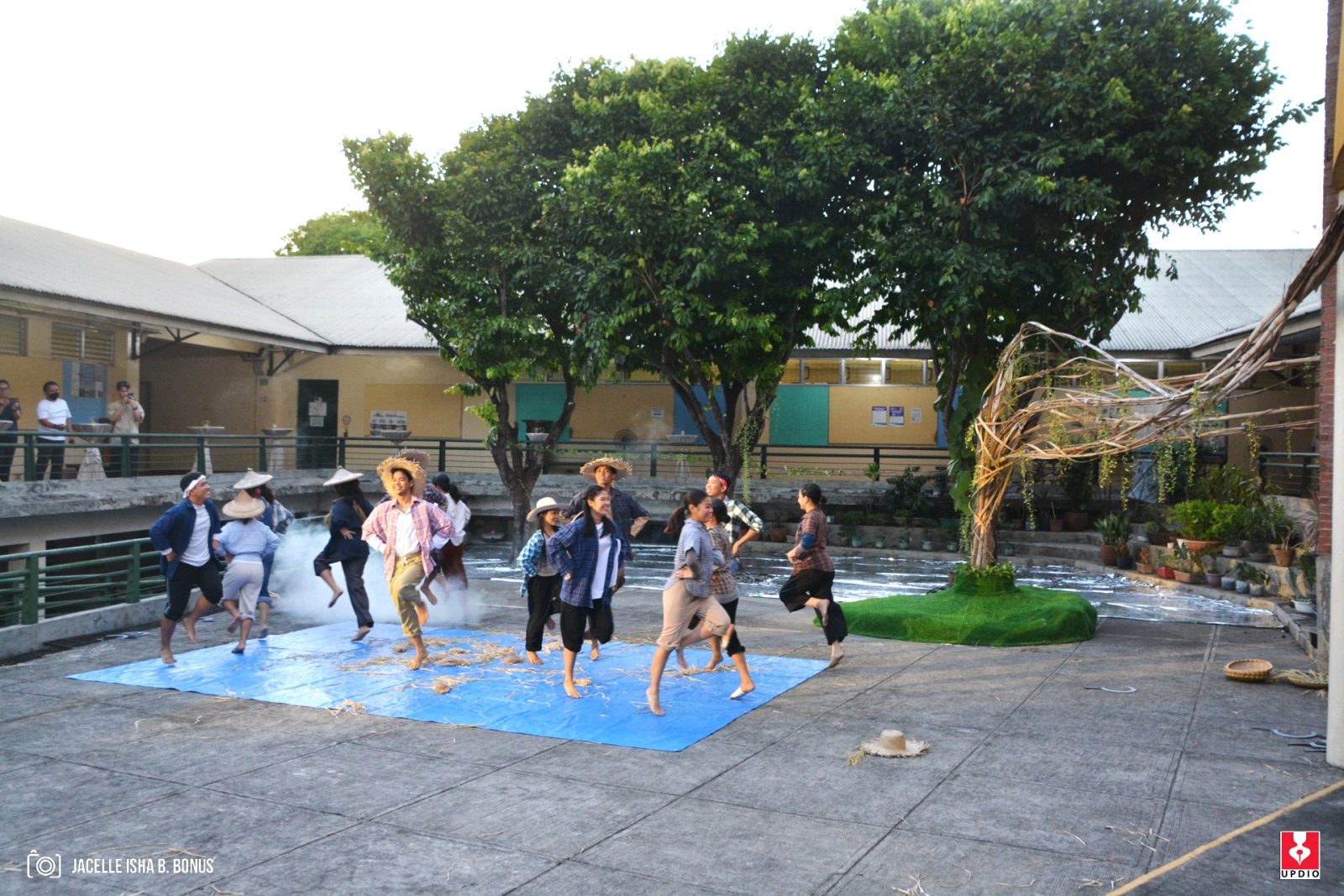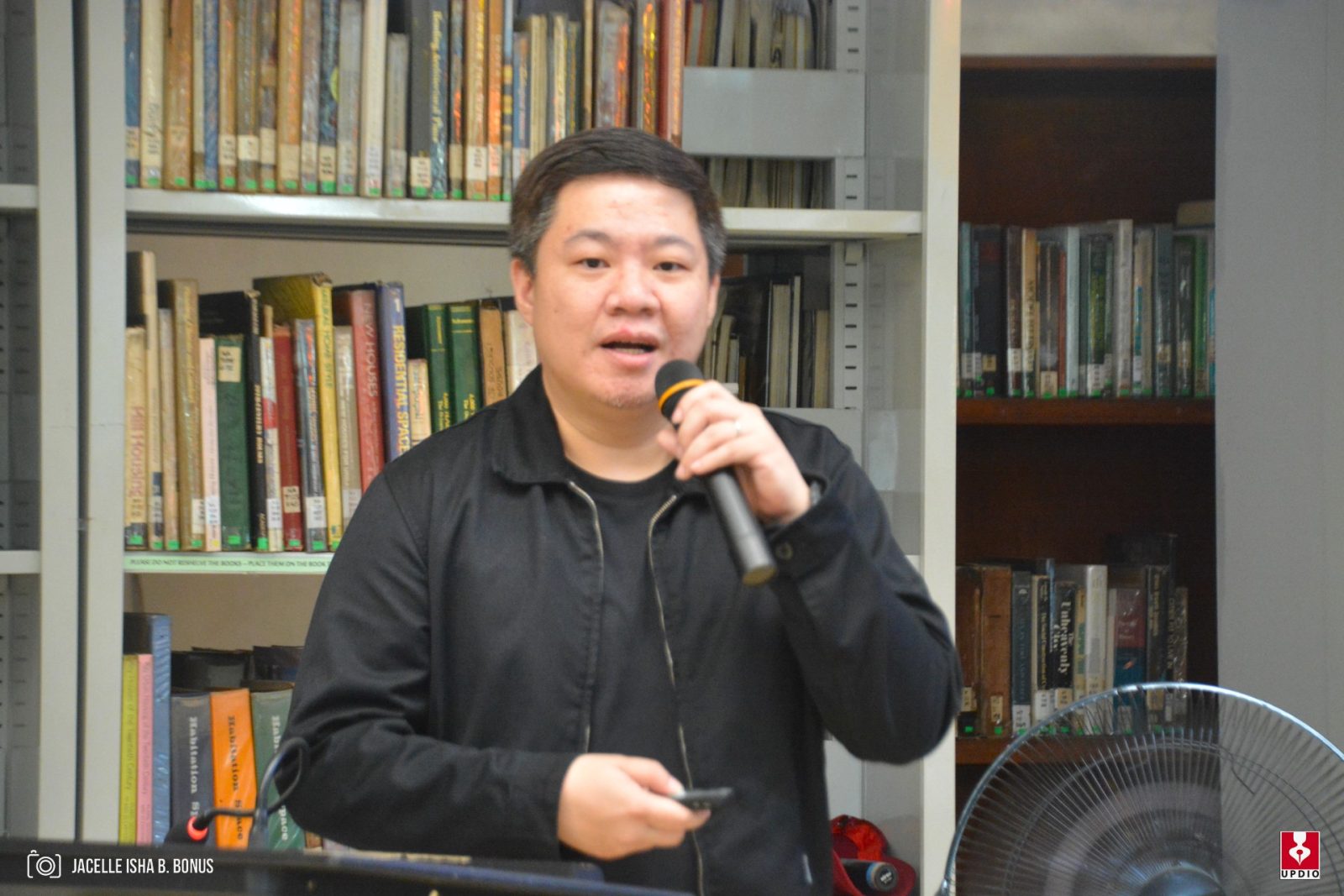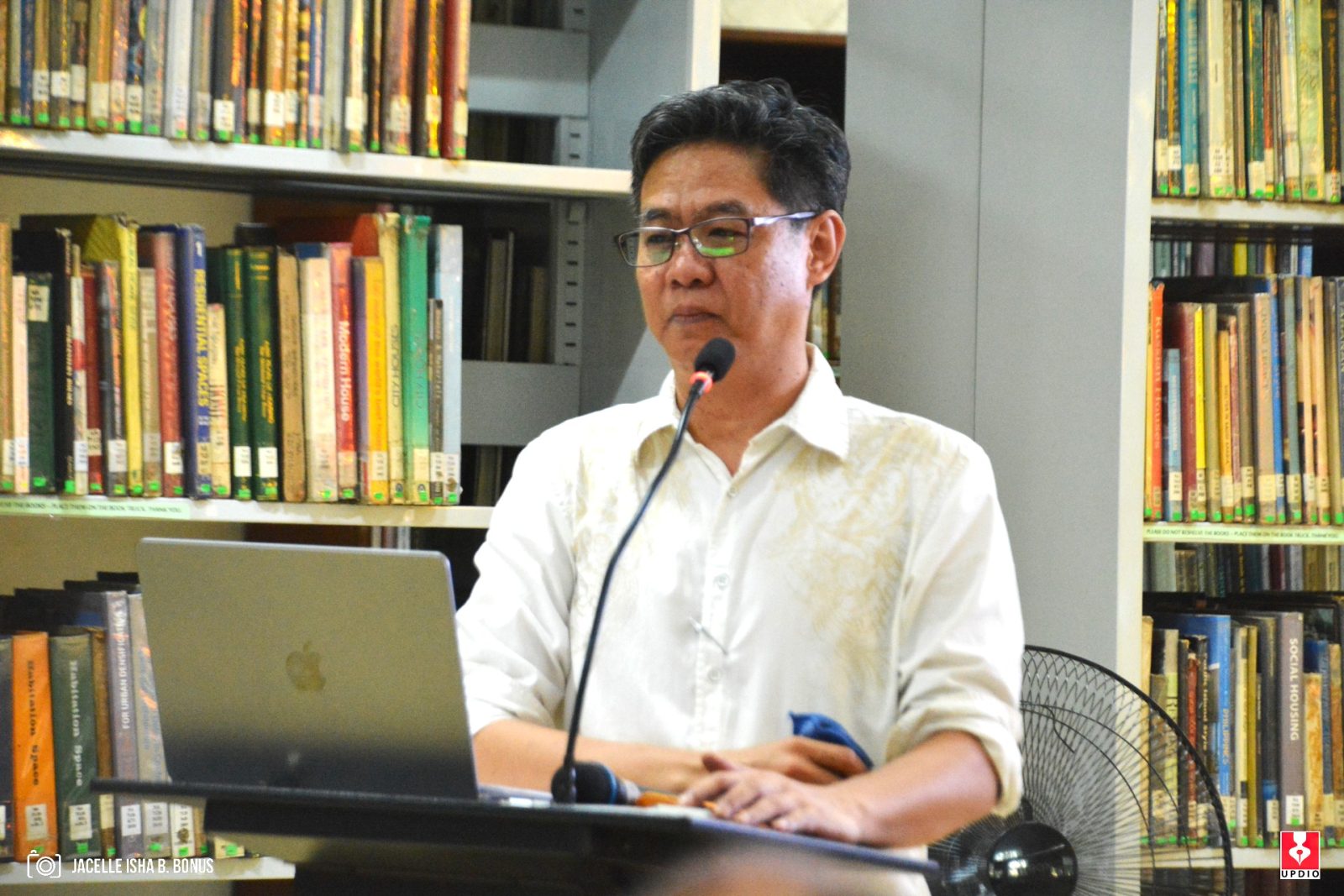Two art installations were unveiled on the same day at the UP Diliman (UPD) College of Architecture (CA) as part of the UPD Arts and Culture Festival 2024 and the President’s Committee on Culture and the Arts’ (PCCA) Day of Remembrance.
The CA first launched the HOM(e)AY ng Pangarap: HOMage to the UP Dreams of palAY farming families (HOM(e)AY), a land art installation.

Maria Vio Bianca C. Fernandez, program coordinator of the bachelor of landscape architecture program, said the installation “is a testament to the resilience of Filipino migrant rice farmers… who face significant challenges in providing education for their children including the dream of attending institutions like UPD.”
As part of the HOM(e)AY launch, the UP Filipiniana Dance Group performed a ritual dance celebrating the hard work of migrant farm rice workers. HOM(e)AY was presented by the CA Environmental Landscape Studio Laboratory (ELSL), in partnership with the Office for Initiatives in Culture and the Arts.

Following the HOM(e)AY launch was the official launch of the Space (LAb) x: Space x (Landscape + Architecture + Laboratory) x Experiences Project (Space Lab x), a CA project undertaken with a grant from the PCCA.
Nappy L. Navarra, head of the ELSL, said Space Lab x “can be divided into three groupings or clusters of meaning.”
Navarra said the first part is the space. According to him, “space is the main product of architects and landscape architects.”
The second part is the “LAb” and the third is the “x”.
“The LAb is spelled with L, A, and b to emphasize the role of landscape architects in creating spaces. It also represents the ELSL. The x stands for their readiness to collaborate with other disciplines, other professions, other units and colleges, and with the UP System and UPD administration and offices,” he said.
He added that the art installation, which is the centerpiece of the Space Lab x, is “inspired by the concept of artificial nature—a human made or simulated environment that mimics natural element or ecosystem.”
“This installation adopts a critical perspective that examines the troubled connection between humans and nature, the constituent’scontestations between culture and nature, formality and informality in buildings and in ourhabitations, and the technologies that we can see all around us, be it mechanical, analog, or digital,” Navarra said.
In describing the installation features, he said the natural elements were deliberately made to look artificial.
“The landforms were made of cardboards and artificial turf, the trees were made of bamboos to look like manufactured structure, the metal sheets and Mylar simulate the reflective surface of water, and bamboo sticks represent the digital wires and cables,” Navarra explained.
The art installation was built by second-year CA landscape architecture students. A highlight of the launch was Space Lab x’s lighting.
“All these permeate the walls of the CA, leading to the depository of knowledge,” Navarra said.
The two exhibit launchings were part of the CA event dusk/dawn: Space LAb x Lighting Event and HOM(e)AY Launch (dusk/dawn: Space Lab x and HOM(e)AY) on April 26 at the CA Library and Courtyard, Building 2.

dusk/dawn: Space Lab x and HOM(e)AY also featured a back-to-back talk by William T. Ti Jr., founder and chief executive officer of WTA Architecture and Design Studio, and Leonido M. Gines Jr., director of CA Office of the Extension Program.
Ti’s lecture focused on his ideas and works on social architecture, and on the way people try to change social spaces in the Philippines. Gines, on the other hand, talked about the idea of the sublime in architecture, the impact of thinking and imagining, and the contemplative process of design.

